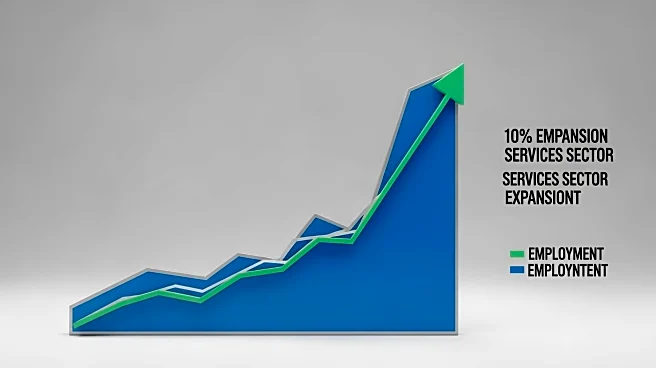What's Happening?
The U.S. services sector activity reached an eight-month high in October, driven by solid growth in new orders, according to the Institute for Supply Management. However, employment within the sector remains weak, reflecting broader labor market challenges
amid economic uncertainty and ongoing tariffs. The ISM's nonmanufacturing purchasing managers index rose to 52.4, indicating expansion, but employment contracted for the fifth consecutive month. The government shutdown has further complicated the economic outlook by delaying official data releases, leaving businesses and policymakers with limited information.
Why It's Important?
The services sector is a major component of the U.S. economy, accounting for over two-thirds of economic activity. Its performance is a key indicator of overall economic health. While the sector's growth suggests resilience, the persistent weakness in employment raises concerns about the labor market's ability to support sustained economic expansion. The ongoing government shutdown and trade tensions add layers of uncertainty, potentially impacting business confidence and investment decisions. The Federal Reserve's cautious stance on interest rates reflects these complexities, as it seeks to balance growth with inflation control.
Beyond the Headlines
The disconnect between strong services sector growth and weak employment highlights underlying economic challenges, such as the impact of tariffs and technological changes on labor demand. The prolonged government shutdown exacerbates these issues by disrupting data collection and economic forecasting. Businesses may face difficulties in planning and decision-making without reliable government statistics. Additionally, the legal challenges to tariffs and their economic implications remain a contentious issue, influencing both domestic and international economic relations.














